I watched The Super Mario Bros Movie during its opening week with the intent of writing this Easter eggs and references article, only to realise that the movie is nothing but Easter Eggs and references. A thorough roundup would be indistinguishable from a wholesale rundown of the entire movie.
The plot for The Super Mario Bros Movie is paper-thin. Narratively, the characters are static bordering on inert; there’s no arc or growth to any of them. It’s just one action set piece to the next; your enjoyment is intimately tied to your pre-existing knowledge of these characters and your ability to recognise a parade of homages to Nintendo history.
It is, in other words, narratively identical to a Mario 2D platformer. Critics are complaining about the lack of characterization and depth in the Mario movie. But to paraphrase Gertrude Stein, there is no “there” there. We needn’t be so harsh.
Unlike HBO’s The Last of Us, which took its game’s cinematic aspirations to their logical conclusion, the Mario franchise’s brilliance has never been the Plot; it’s been the gameplay. It’s been that perfect blend of inventive, instructive level design and hairpin controls.
Take that away, and we’re left with a reel of Easter eggs, which is exactly how this movie was intended. Here are 20 of the best ones that we spotted. Which one was your favourite?
A Flawed Father Figure
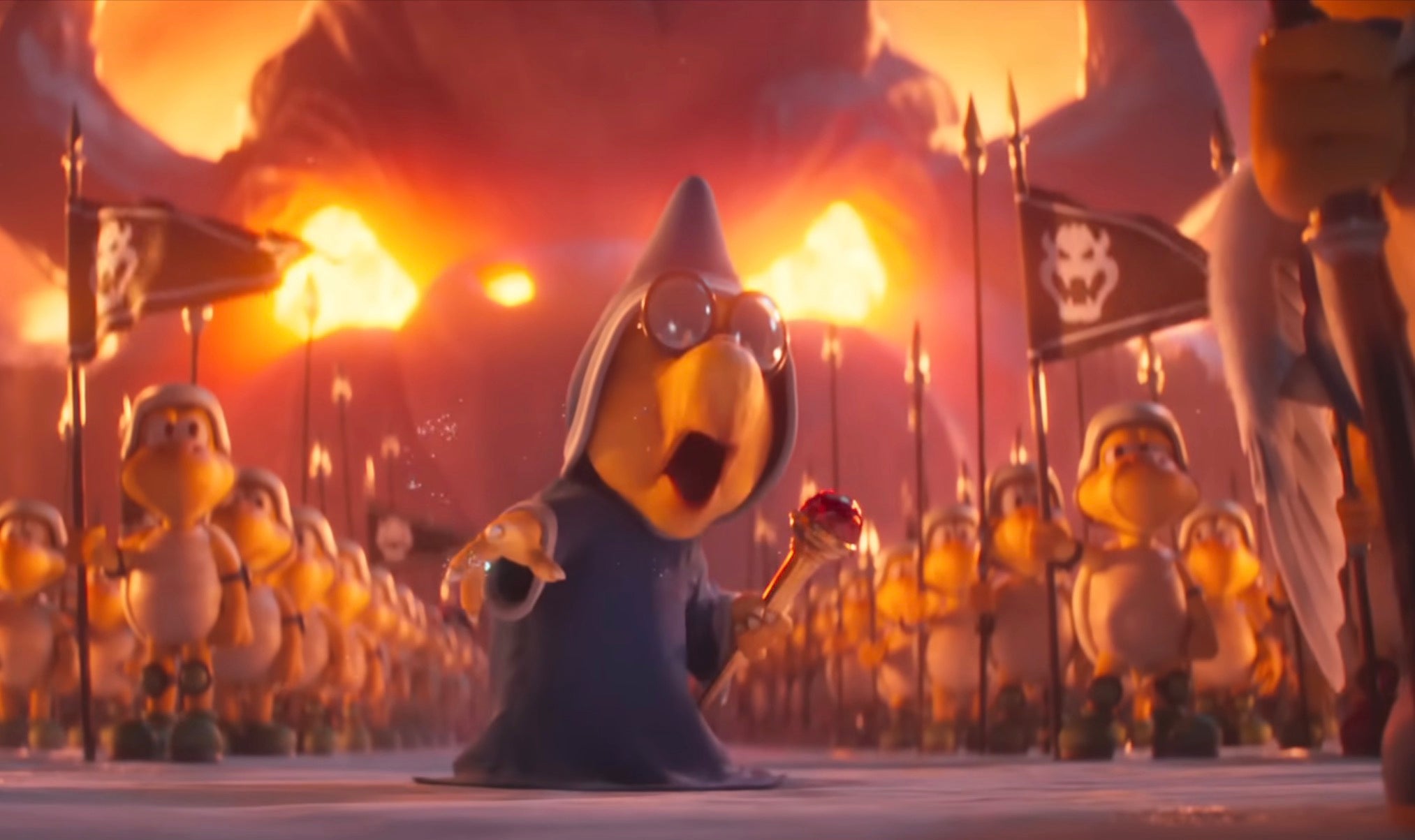
The Magikoopa who acts as Bowser’s right-hand man is named Kamek. He has a fairly lengthy history in the games. He is the closest thing that Bowser has to a father, and he has raised the Koopa King since infancy. He is archenemy of Yoshi, and he appears in multiple Yoshi titles as the main antagonist.
Halfway through the movie, we see Bowser practice his wooing skills with Kamek, who dresses up as Princess Peach for the occasion. This is a reference to the New Super Mario Bros. franchise, where Kamek bait-and-switches you into thinking he’s the princess, only to reveal himself and trigger the second phase of the Bowser showdown.
It’s-a Me!
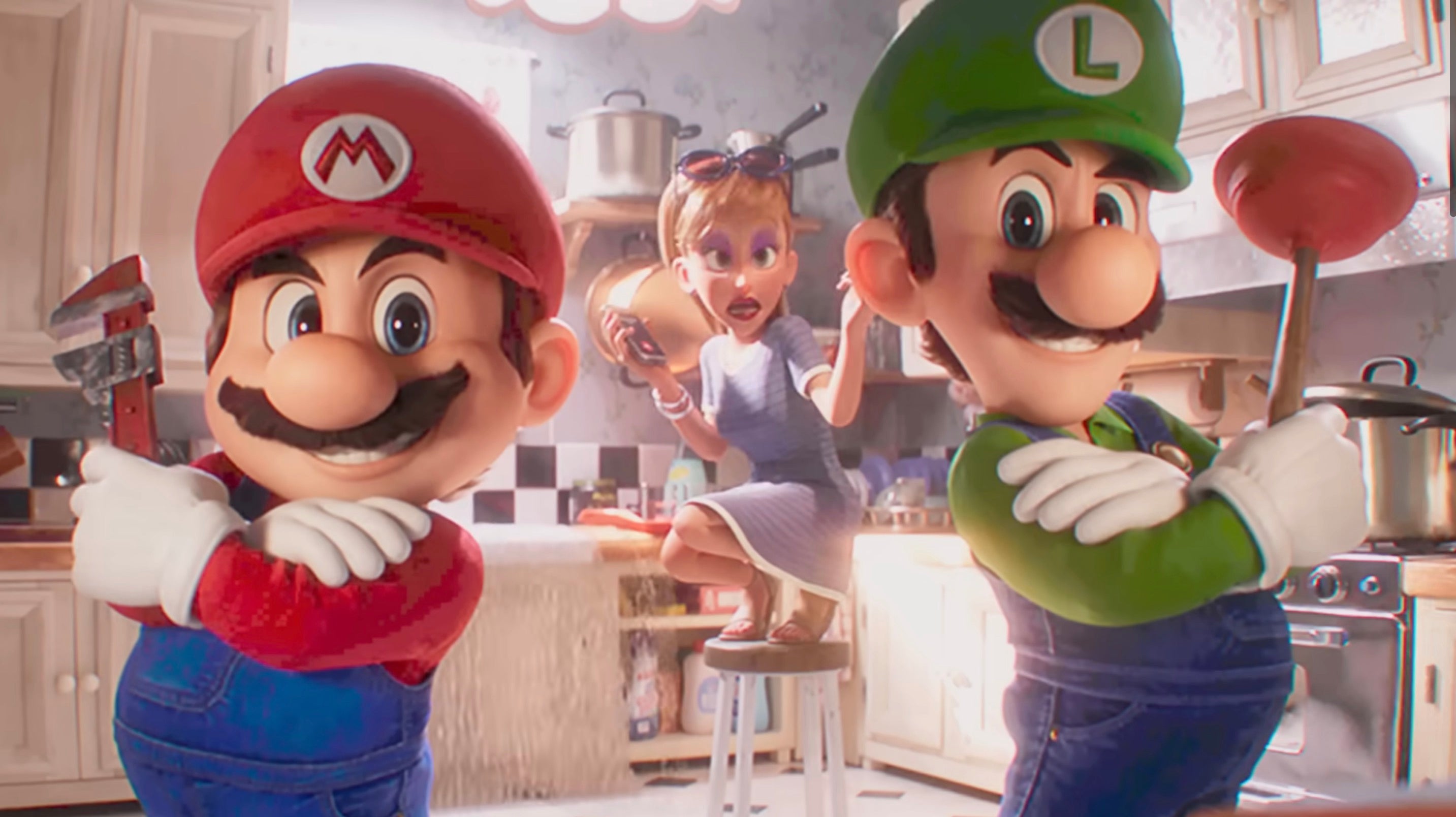
In the games, Charles Martinet performs the voice of Mario. It is a role he has played since Super Mario 64 (1994). But for the movie, he is replaced by Chris Pratt, who does not have Martinet’s high-pitched, over-the-top Italian accent and instead speaks with a more grounded Brooklyn accent.
In a clever wink to the games, we learn that Martinet’s Mario voice is a put-on, intended to draw customers to the Mario brothers’ new plumbing business. Martinet plays several characters including Mario’s dad, a meta reference to Martinet’s role in Mario’s development. Another fun fact here is that Mario’s parents were based on already existing but unused designs made by Nintendo; the dad is almost an exact recreation while the mother saw some adjustments from her original sketches.
Punch-Out!! Pizzeria
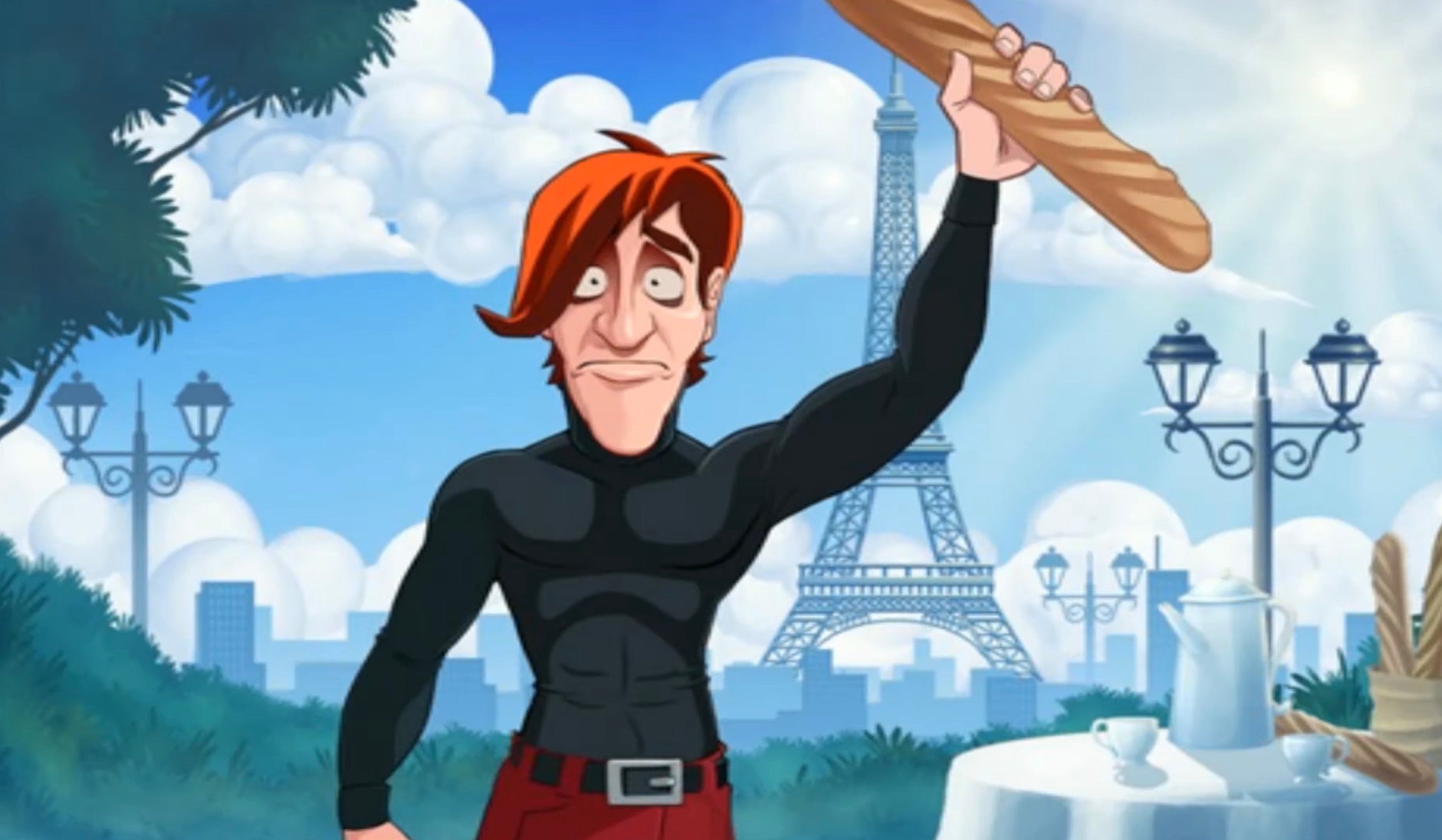
The local pizzeria is named Punch-Out!! Pizzeria — a tribute to the classic NES title that once starred Mike Tyson. The pictures on the walls are not of local celebrities or sports figures; they’re of Little Mac’s most notorious opponents, including Bear Hugger, Mr. Sandman, and Glass Joe.
Spike The Foreman
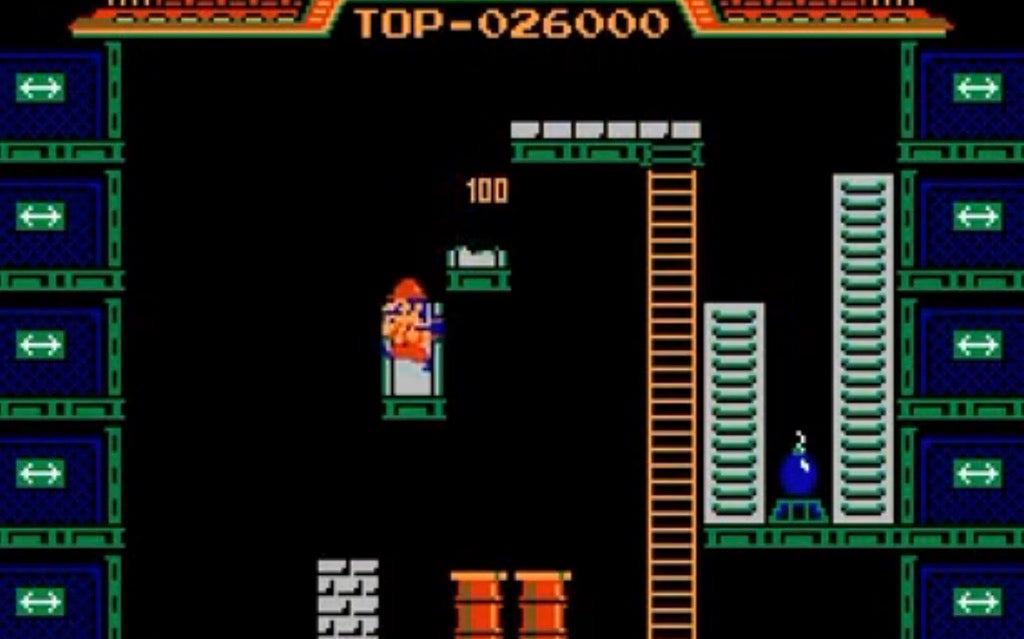
In the movie, Mario and Luigi’s former boss, Spike, taunts them for attempting to start their own business. Spike is the main antagonist in the classic NES game Wrecking Crew (1984), in which you play as Mario on a construction site.
It’s interesting to note that Mario was not always a plumber. As seen in this game and in the earlier Donkey Kong games, he was originally a carpenter. He was first cast as a plumber in Mario Bros. (1983).
Jump Man
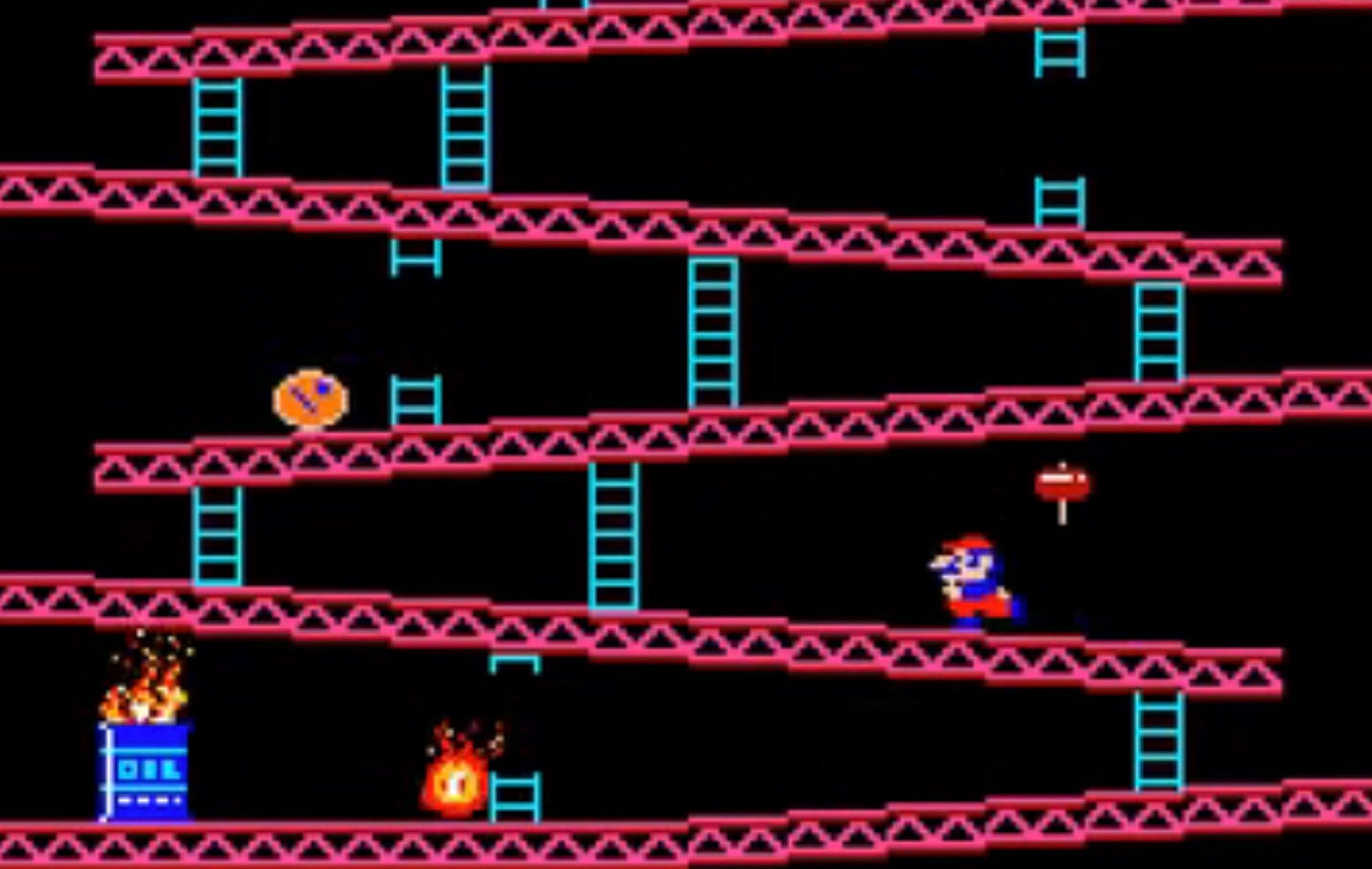
The oddest thing about The Super Mario Bros. Movie is that Nintendo exists within the film’s universe, but presumably does not have Mario as its mascot. When we see Mario in his room, he’s playing Kid Icarus on his old school 8-bit NES, and there’s even a model of Star Fox’s arwing on top of the television set. There’s posters on his wall for Ice Climbers and Baseball.
The most meta reference is in the pizzeria, where we see an arcade of Donkey Kong — Mario’s first appearance in a video game. However, it is renamed as Jump Man, which was Mario’s original name before Nintendo formalized the canon.
1-1 Homage
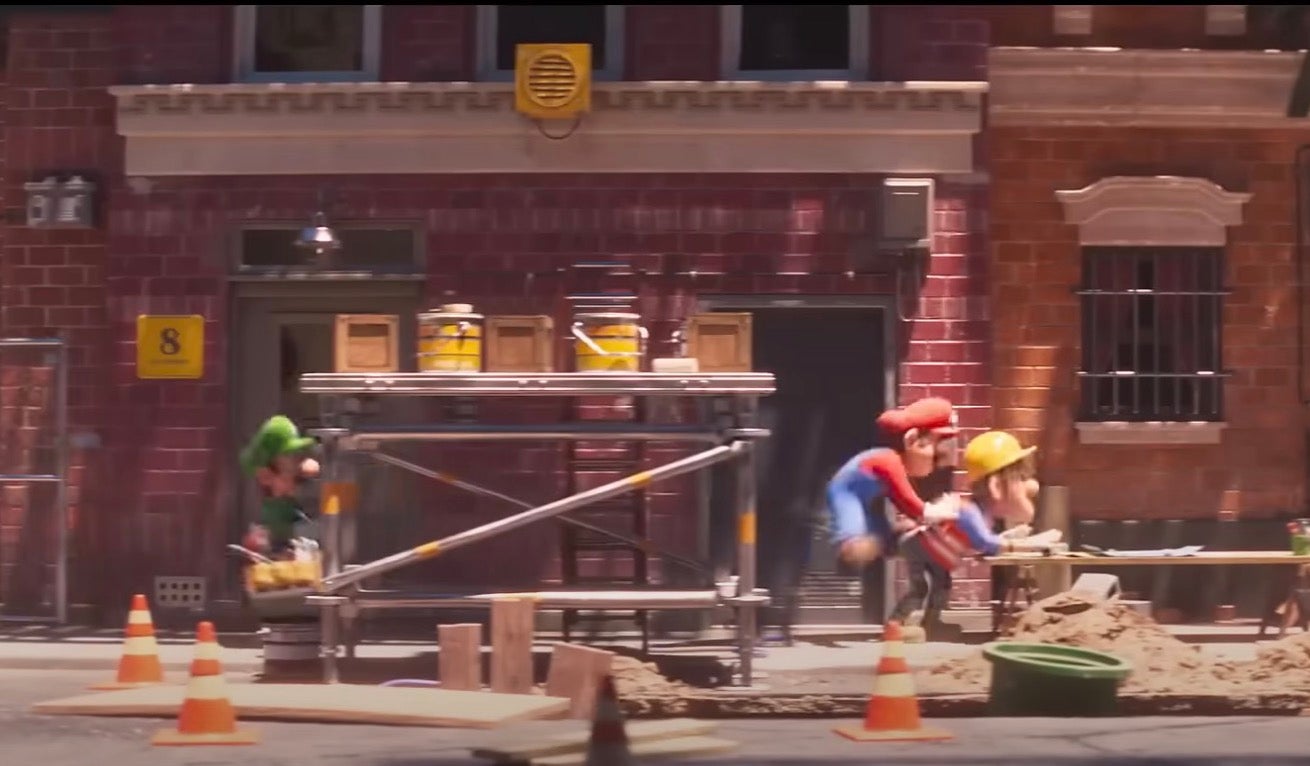
At the beginning of the movie, Mario and Luigi run through a construction site, which is clearly modelled after 1-1 in Super Mario Bros. (1985). We can see the signature brick formation in this shot; the house number, the two paint buckets, and the loudspeaker are the four Question Mark Blocks. The sequence even ends with a ‘flagpole sequence,’ where Mario slides down a metal sign post.
Mayor Pauline
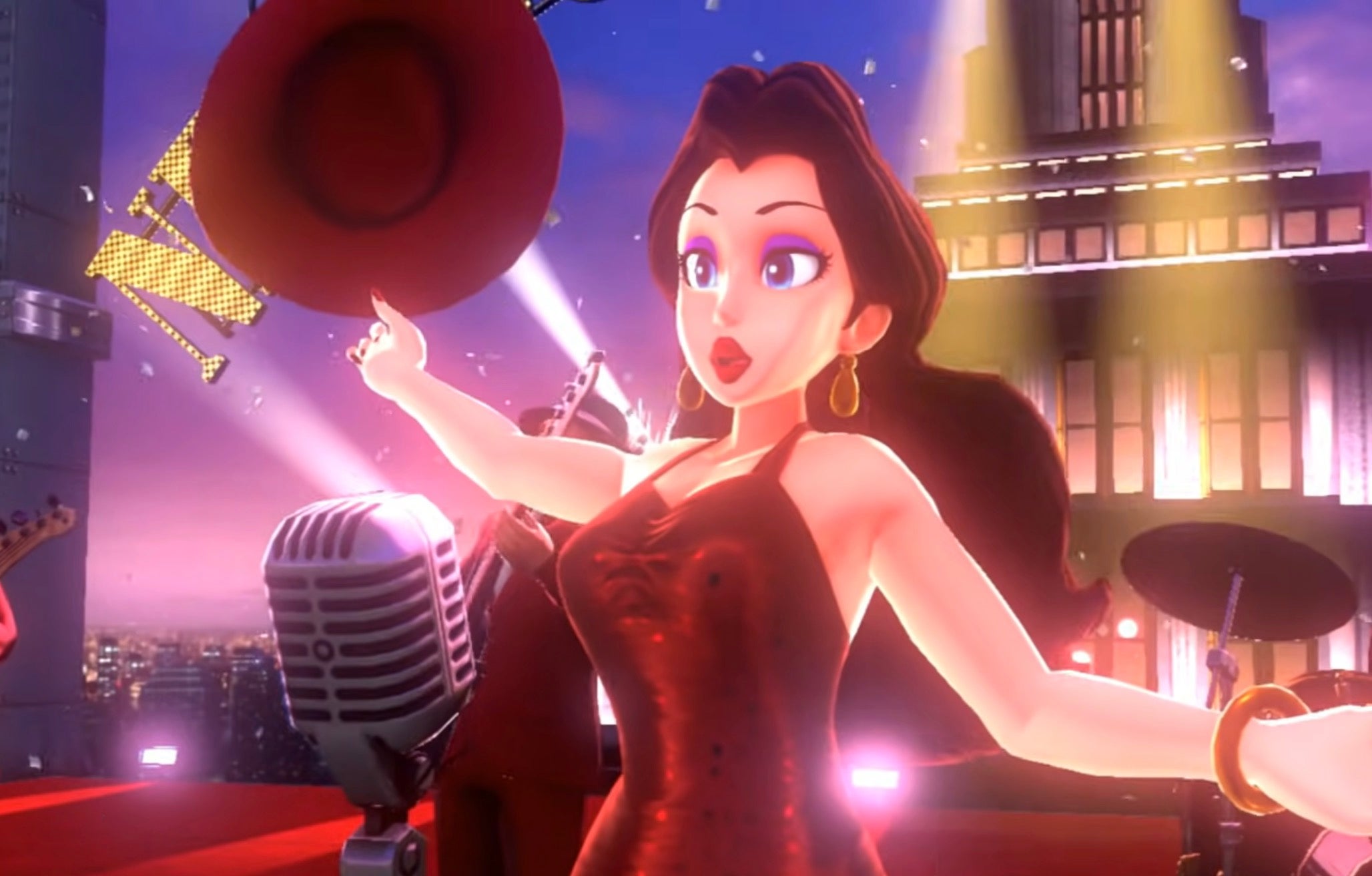
Pauline, the original damsel in distress from Donkey Kong, makes a cameo appearance on the news during the flooding segment as New York City’s mayor. Pauline stars in Super Mario Odyssey as the mayor of New Donk City, which is heavily inspired by midtown Manhattan. Because we’re in NYC and not New Donk, people are debating whether or not it’s possible that Mario witnessed 9/11.
Going Underground
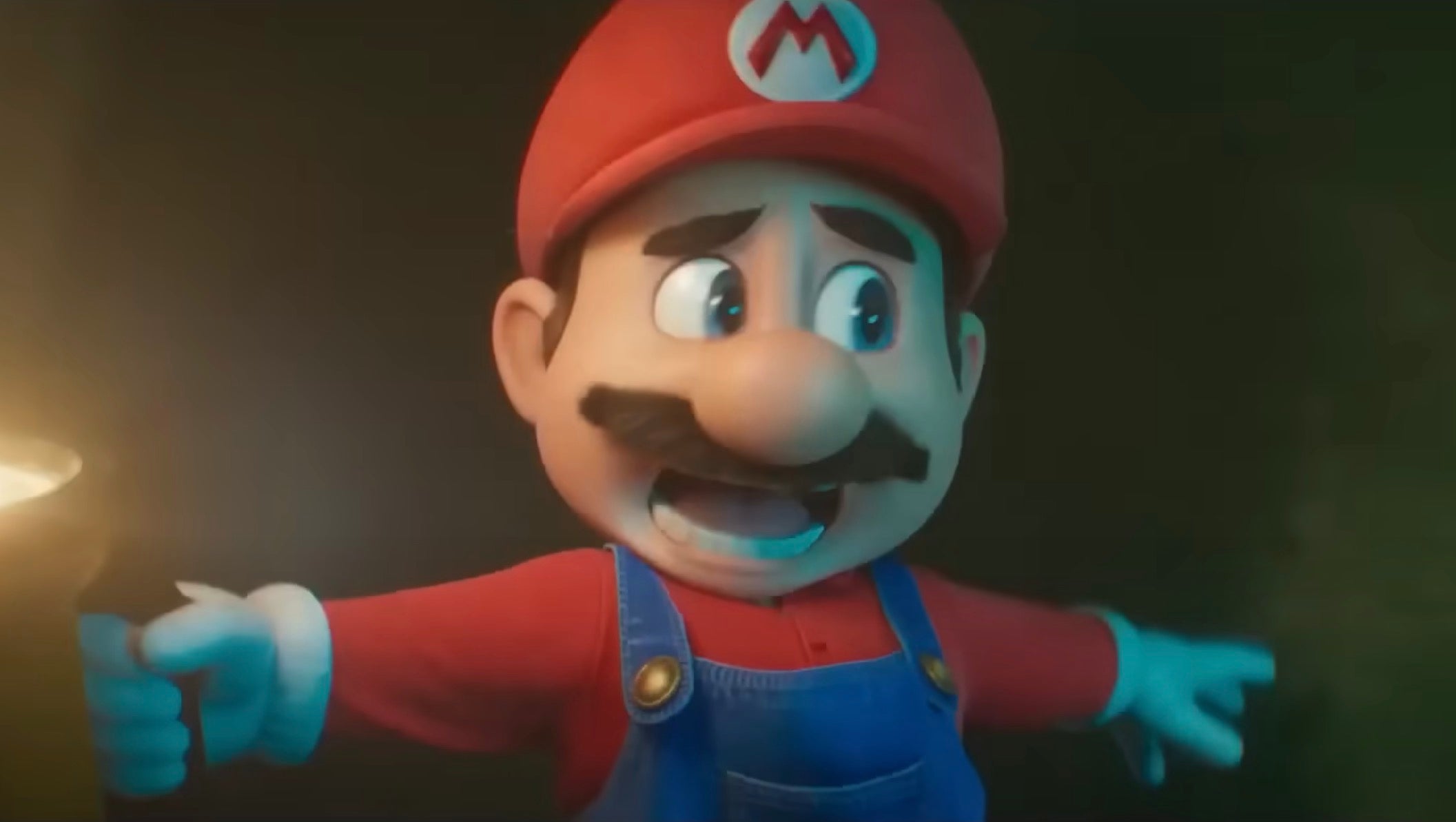
When Mario and Luigi go underground for the first time, we hear Koji Kondo’s signature underground theme. We also see a sign as they descend that reads, “Level 1-2″ — the first time we hear the music in Super Mario Bros. (1985).
DK Rap
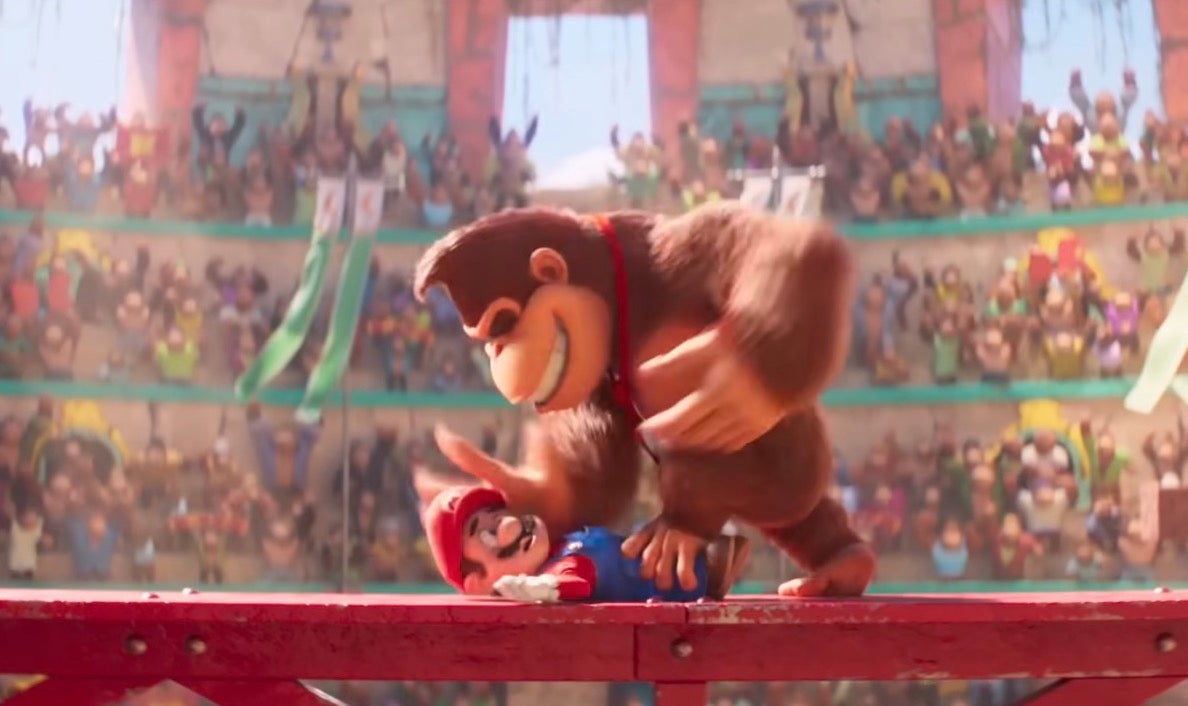
The movie incorporates two different rap songs from the Mario franchise’s past. The first is the beat for “Plumber Rap,” from the live-action Super Mario Brothers Super Show (1989). The second is “DK Rap” from Donkey Kong 64. The composer, Grant Kirkhope, has expressed his disappointment and frustration that he was not cited in the end credits as having written the song.
Koopalings?

There’s one overt reference to the Koopalings in the movie; the piano that Bowser plays has Ludwig von Koopa engraved on its front. Ludwig von Koopa’s appearance resembles that of classical composer Ludwig van Beethoven, which makes his name reference on the piano appropriate. In fact, a lot of the Koopalings’ names are based off of music artists’ — Lemmy Koopa takes his name from Lemmy Kilmister, the lead singer of Motorhead, and Roy Koopa is named after Roy Orbison; they both wear signature dark shades.
According to the original canon, the Koopalings were Bowser’s seven kids. They were later retconned to be his underlings, with Bowser, Jr. as Bowser’s only son.
Rainbow Road Shortcut
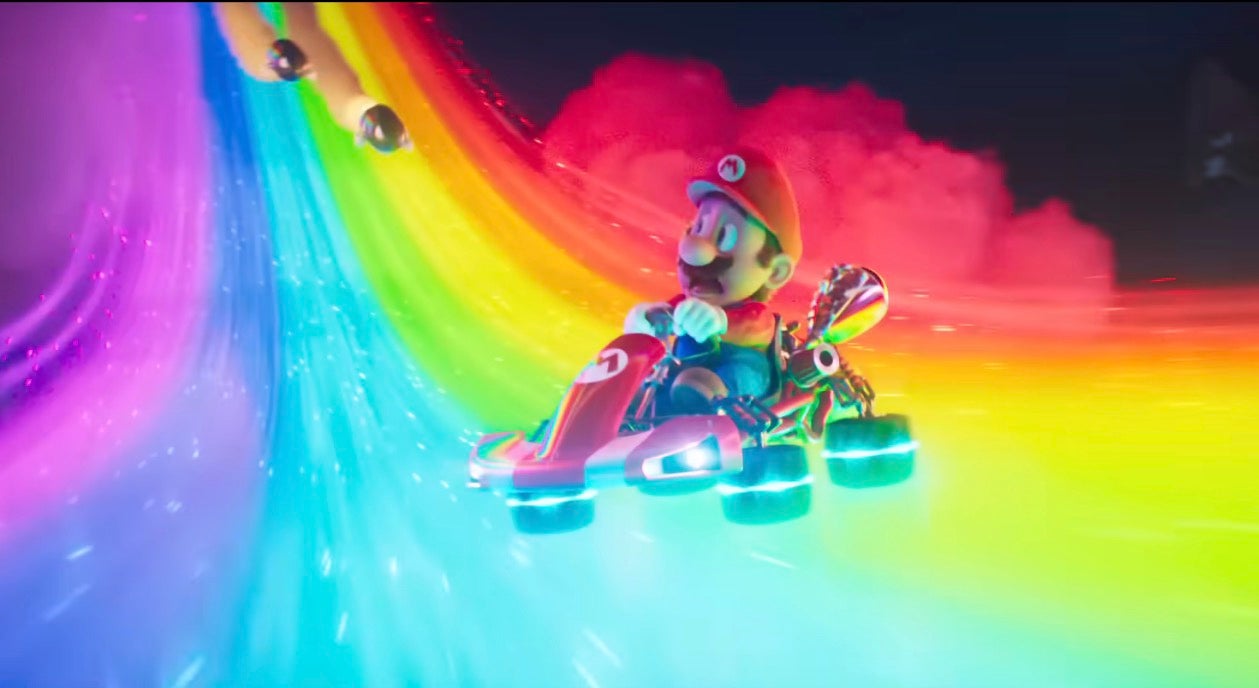
The Mario Kart sequence is stuffed with references. We see Mario drift around corners. We see a ricocheting Green Shell. We see a Blue Shell attack and subsequent explosion. We see a Kart customisation menu that looks exactly like the one in Mario Kart 8. But the coolest reference has to be when Mario is on Rainbow Road, and he drops down to a lower part of the track, a famous shortcut in the Rainbow Road track in Mario Kart 64.
A Huge Wedding Cake
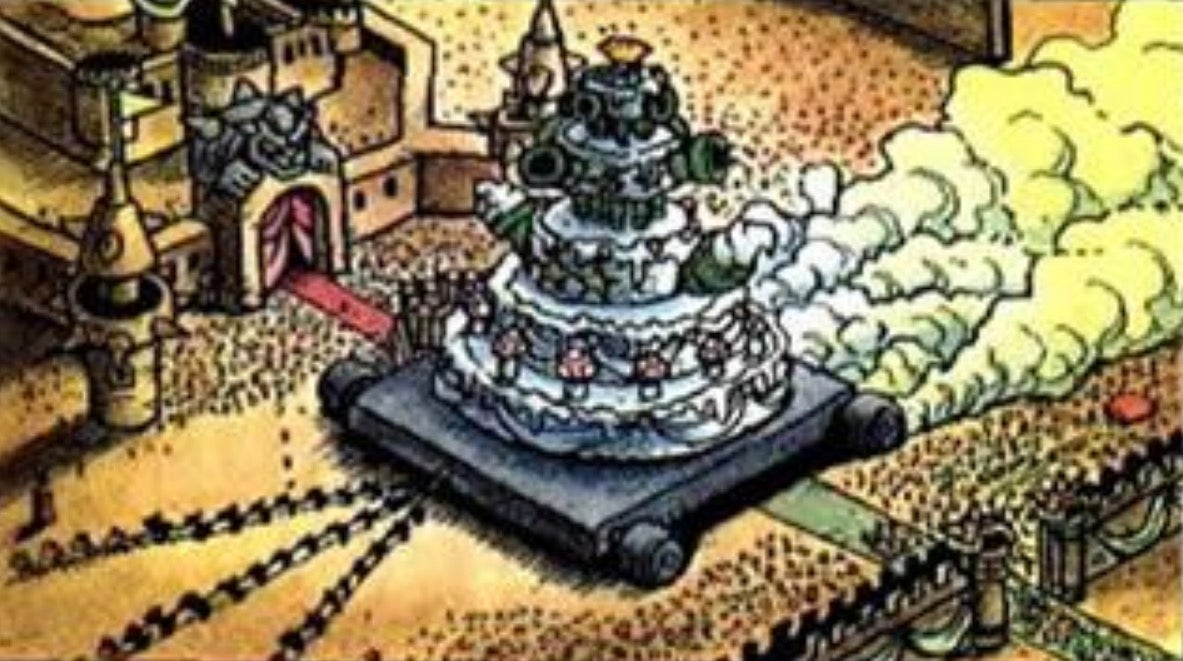
We see a massive wedding cake at Bowser’s planned wedding, which looks very similar to the one in the Super Mario Adventures, a comic written by Kentaro Takekuma and illustrated by Charlie Nozawa. The comic, which was tied to the release of Super Mario World originally ran as a ten-month serial in Nintendo Power.
The wedding cake is crucial to the comic; its creation and transportation are both key plot points, and Bowser and Mario have their final confrontation on top of the cake.
Wedding Guests
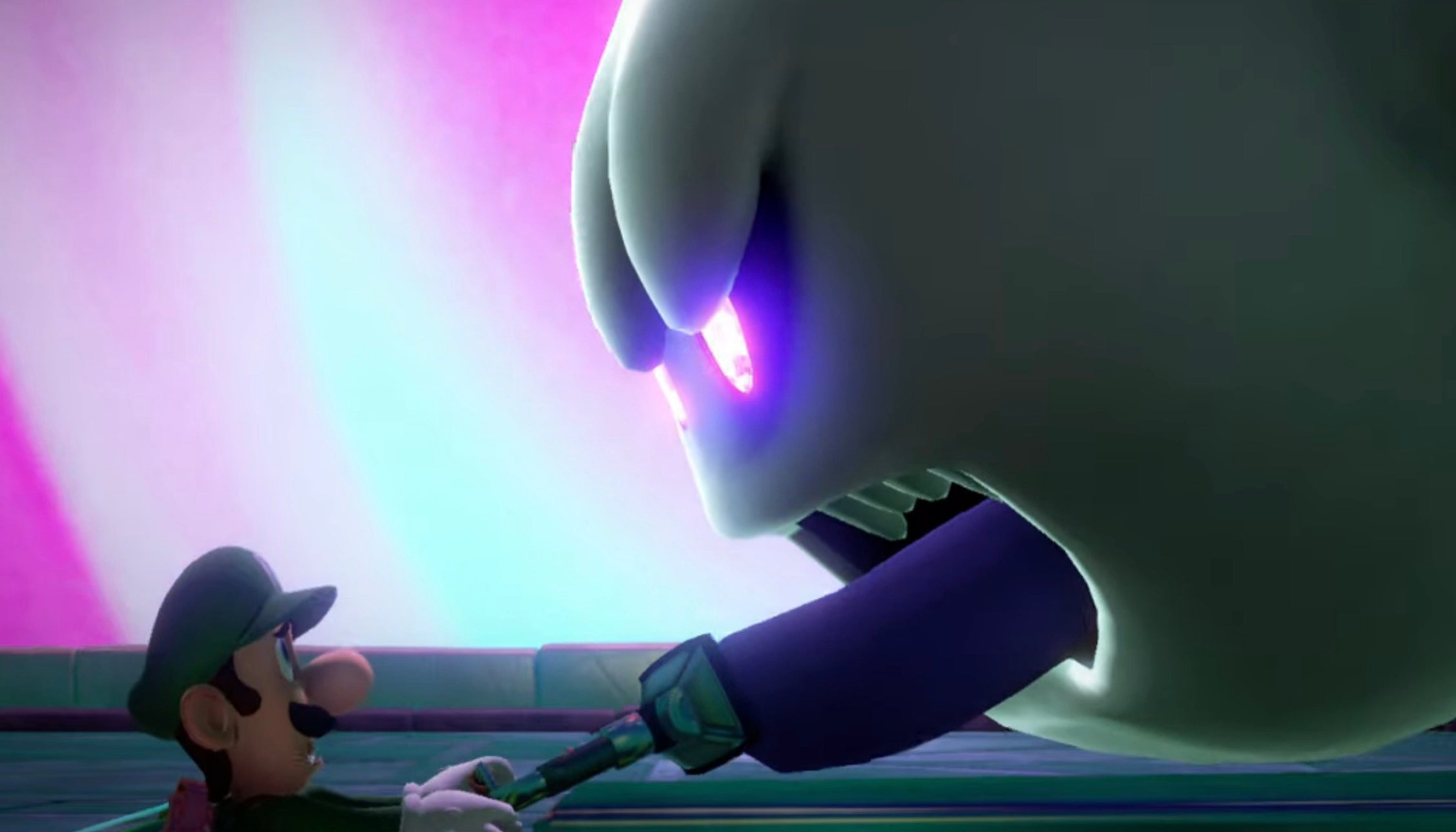
Among Bowser’s minions in the wedding audience we see some notable faces. We see King Bob-omb, the first boss in Super Mario 64; King Boo, the main antagonist in the Luigi’s Mansion spin-off franchise; and Petey Piranha, a boss from Super Mario Sunshine.
Disk-Kun Hardware Store
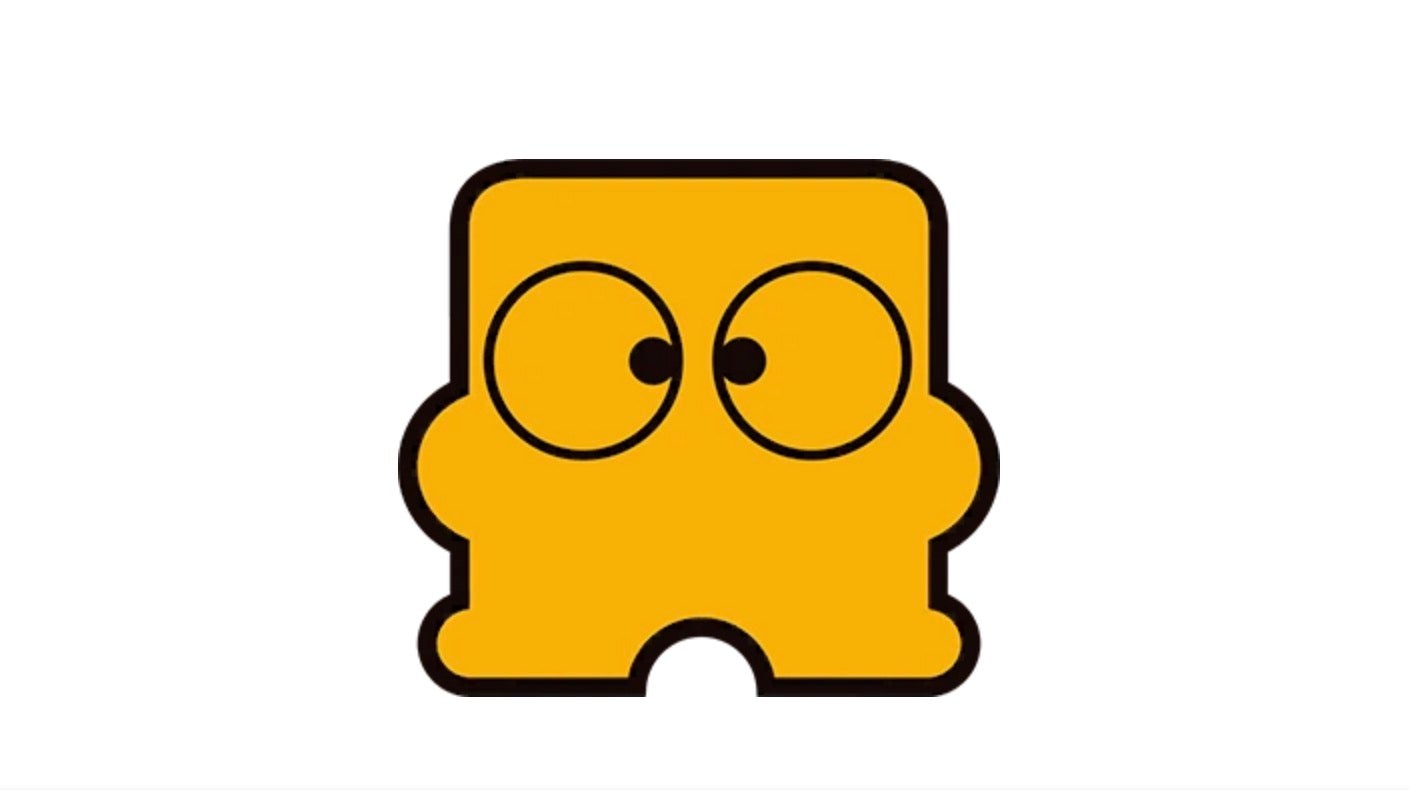
It’s worth looking at all the storefronts. One of the restaurants with a familiar 8-bit duck on its logo is named Chasse au Canard, which translates to ‘Duck Hunt.’ The original Duck Hunt game was a classic that used the NES Zapper to shoot at your TV screen. For a time, it was also packaged with Super Mario Bros. on a single cartridge.
One of the more obscure references is the Disk-Kun Hardware Store. This is a reference to the Japanese mascot Diskun, who represented Nintendo’s Famicom Disk System. The console, which only released in Japan, used floppy disks instead of cartridges.
Yoshi Tease
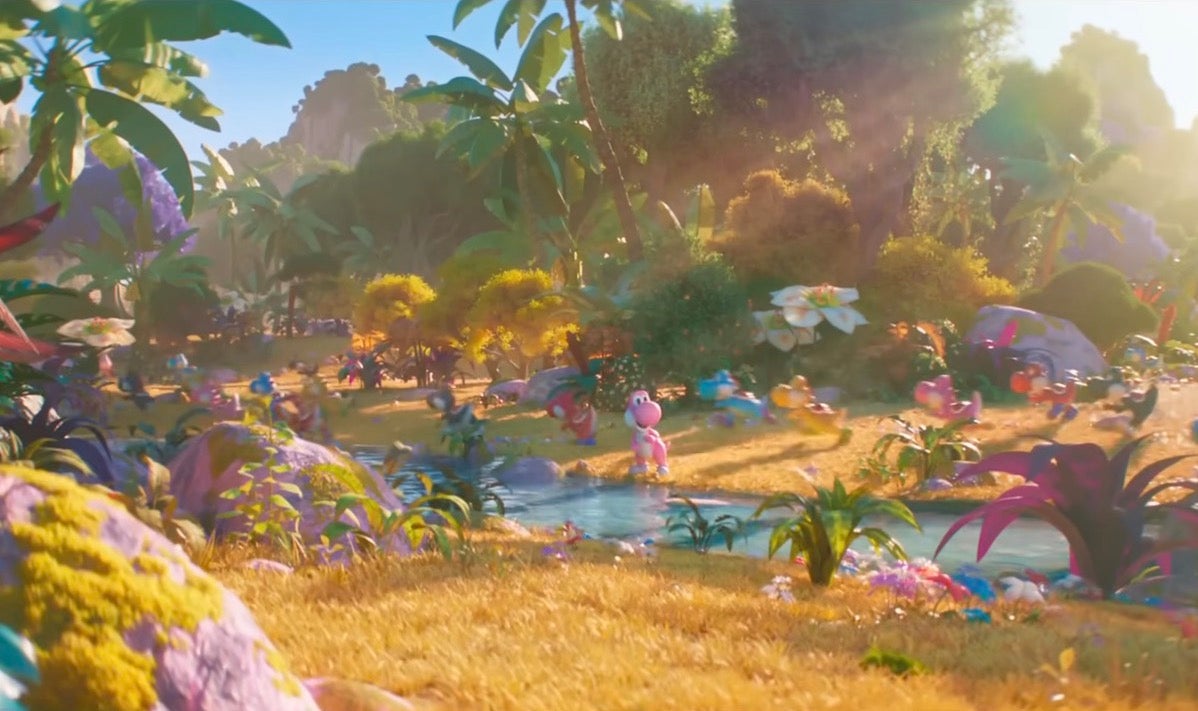
Mario’s end credits scene shows a green-dotted Yoshi egg, which begins hatching. This is a reference to the critically derided Godzilla movie from 1998, which ended with a Godzilla egg hatching.
We see an entire herd of Yoshis running through the forest near the beginning of the film, but none of them is the Yoshi or has his signature green colour. It appears that Illumination is setting up for a sequel (we see a Luma creature from Super Mario Galaxy) , but we’ll have to wait on the box office returns to know for sure.
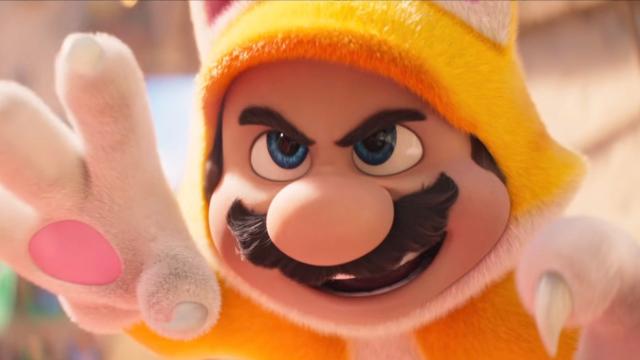
Leave a Reply